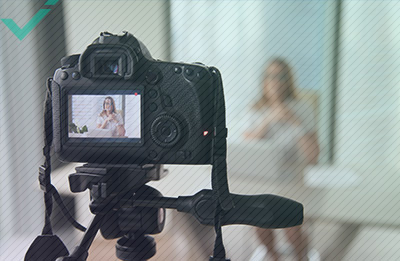Most pieces of content really benefit from images. Images support the arguments of articles, make them easier to scan, and even boost SEO. However, incorrect image use can get you into big trouble if you don’t pay attention to copyright laws.
Most likely, you already know that you cannot just take any image found online and feature it in your design, blog post, etc. However, the fine print gets even more confusing. Is it enough to provide attribution to an image? Where can you find images that are free to use? What is the “Creative Commons” licence exactly?
In this article, we’re going to explain how copyright laws work and how to use images legally. But first, let’s start with the basic question—what is copyright?
COPYRIGHT 101?
Copyright is “a form of intellectual property that grants the creator of an original creative work an exclusive legal right to determine whether and under what conditions this original work may be copied and used by others, usually for a limited term of years”. Put simply, copyright strives to protect the creator and ensure their work isn’t stolen, redistributed, or sold illegally—and if it is, that the people responsible are held accountable.
Copyright applies automatically as soon as a certain idea is expressed in a material form: written down, painted, designed, recorded, etc. It also applies to published, unpublished, and electronic material. The only difference is that once a material is published, the duration of copyright depends on the type of work or subject matter. When it comes to unpublished material, however, copyright lasts either indefinitely or until this material gets published.
COPYRIGHT RIGHTS
How exactly does copyright law protect creators? Largely, by giving them complete control over the use and distribution of the work they’ve created.
According to Legal Information Institute, the creator of an original work has the following rights:
- To reproduce their copyrighted work
- To prepare derivative works based on it
- To distribute copies of the work to the public
- To perform the work publicly (including the means of a digital audio transmission)
- To display the work publicly
What exactly does this mean to people who want to use copyright-protected images?

HOW TO USE COPYRIGHT-PROTECTED IMAGES
If you want to include a copyright-protected image in an article, you have to receive written authorisation from the creator of this image (and, most likely, pay a certain fee for image use). Once granted permission, the image creator will provide you with instructions on how to credit the image, or you’ll be able to find such instructions in the terms and conditions of the creator’s website. Either way, read them carefully and be sure to stick to them.
Sometimes, providing attribution or somehow acknowledging that you aren’t the creator of this specific image is enough to credit the image. However, keep in mind that this works only when you are granted permission by the creator and are acting in accordance with the given instructions.
If you provide attribution without asking the creator first, this won’t defend you from copyright infringement. If the image creator finds out that you’re using their work without express permission, you’ll be in trouble—unless, of course, you have the right of fair use to back up your actions.
WHAT ARE COPYRIGHT INFRINGEMENT PENALTIES?
Usually, penalties largely depend on the case and country. However, while each situation is unique, we can assume what to expect after learning the common legal penalties.
Such penalties differ depending on the circumstances of their usage. For instance, if one merely uses a copyright-protected image without asking permission from its owner and found guilty, they can be ordered to pay damages and legal fees. However, if one uses such an image to gain financially, they may face further penalties and up to five years in jail.
TheContentFactory wrote about the mistake they made while writing a post for a client’s site. The author of the post didn’t ask the image’s creator for permission to use their photo in a blog. This mistake nearly cost the company $8,000: they managed to negotiate a settlement and paid $3,000. However, this is still a huge price to pay!
If you’re feeling uncomfortable already, there’s no need! Such mistakes can be avoided. Furthermore, while you usually have to receive the creator’s authorisation to use a certain image, this isn’t the only way to use images legally.
HOW TO USE IMAGES LEGALLY
Asking creators for permission to use their images is generally a great and totally safe option. However, this option is extremely hard to implement for companies that have to use hundreds of images on a daily basis. So, what can you do in this case (or in any other that makes it difficult to ask the creator for permission)?
The most convenient option is to create images yourself: take photos, make your own illustrations, design images using tools like Photoshop and Canva, etc. On one hand, it’s great; you can create just the right images to complement the content of your blog post. On the other hand, it is often costly as you need to hire someone to do the job. While big companies can surely afford that, it might not be an option for smaller ones.
Another option is simply to use the right websites! Some sites allow you to use images for a fee, while others are filled with images that can be used—legally—for free.
However, even in this case, you need to pay attention to the images’ descriptions and disclaimers.
EDITORIAL AND COMMERCIAL USE
When you search stock sites for images, you may stumble upon markers like “Editorial Use Only”. What exactly does it mean for you and your business?

According to Shutterstock, “images that are marked as ‘Editorial Use Only’ are ones that have not been released for commercial use and have also been taken without the consent of the individuals in the photo”. This means that you can include such images in individual blog posts, newspaper articles, news broadcasts, and other non-commercial applications.
“Non-commercial” is the keyword here. You can use such images to enhance the effectiveness of a certain story, however, you cannot use them to sell something. For instance, if a photo allowed for editorial use only is used to design the layout of a company’s blog, this could be considered copyright infringement.
Images marked as “Model Released” have unblurred, recognisable faces in them. This means that the people in the images have signed model release forms, and such images can be used for any purpose, including commercial ones, as long as you stick to the licence agreement.

The same goes for photos marked as “Commercial Use”.
If you have doubts on whether you should use a certain image for a certain purpose or not, consider consulting your own legal counsellor. They could help you save your time, money, and reputation from any unnecessary dents.
Now that you know about the specifics of using images, you can start searching for the right image stock for you. Here are some of the most well-known image stocks, both paid and free.

PAID IMAGE STOCKS
Even paid image stocks offer free content sometimes. However, most of the images (and the best of them to boot) come at a price. And while you do have to pay a certain fee, you’ll get beautiful images in return. Your choice is almost limitless as well: you can forget about scrolling through page after page of images you’ve already seen on other blogs.
The best paid image stocks are:
- Shutterstock (https://www.shutterstock.com)
- Depositphotos (https://depositphotos.com)
- Adobe Stock (https://stock.adobe.com)
- iStock (https://www.istockphoto.com)
- 500px (https://web.500px.com)
- Alamy (https://www.alamy.com)
FREE IMAGE STOCKS
Free image stocks allow you to use any image for free. However, the conditions will differ with every image. Just like paid image stocks, you have to pay attention to the usage rights here. Some images might require attribution, and others are free for personal use only.
Still, free image stocks are a great source of images for anyone looking to add a bit of visual support to their content. Sure, you may stumble across other blogs that feature the same images as you, but for smaller companies, startups, and personal blogs, having any images at all will do more good than harm for your content.
The best free image stocks are:
- Unsplash (https://unsplash.com)
- Burst (https://burst.shopify.com)
- Pexels (https://www.pexels.com)
- Negative Space (https://negativespace.co)
- Magdeleine (https://magdeleine.co)
CC SEARCH
Last but not least, try using the Creative Commons search. It trawls a variety of sites for images with the Creative Commons (CC) licence, allowing you to use the images without asking for the creator’s permission directly (as long as you abide by the terms of the licence, of course).
CC licences differ by conditions; therefore, always double-check each image before using it. For instance, a CC0 licence doesn’t require any attribution, while a CC BY does. CC BY-NC-ND is probably the most restrictive; it requires attribution and prohibits you from altering an image or using it for commercial purposes.
The topic of image copyright and fair use is generally complex. However, putting some due diligence into this field could save you a lot of money and stress, while also respecting and protecting the rights of image creators.


